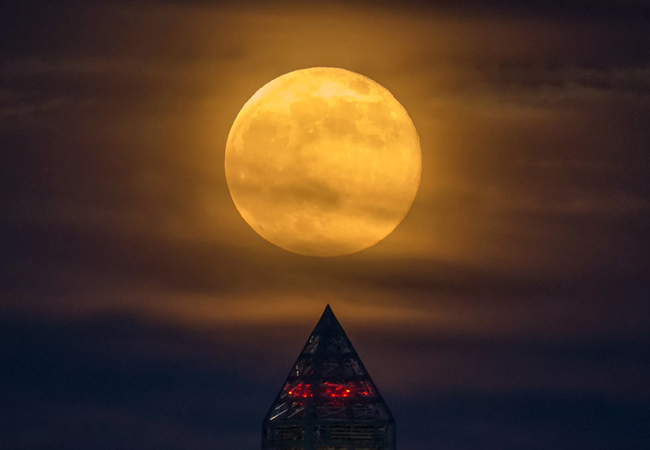
The biggest ‘Supermoon’ of the Year is on July 13. “supermoon” occurs when a full moon coincides with the Moon’s closest approach to Earth in its elliptical orbit, a point known as perigee.
As per a NASA report, “The next full moon will be Wednesday afternoon, July 13, 2022, appearing opposite the Sun in Earth-based longitude at 2:38 p.m. EDT. This will be on Thursday morning from the India Standard Time Zone eastward to the International Date Line. The Moon will appear full for about three days, from early Tuesday morning through early Friday morning.”
Supermoons only happen three to four times a year, and always appear consecutively.
Many parts of the globe will witness a glimpse of the biggest ‘Supermoon’ of the year on Wednesday (July 13). This full moon is also known as the Buck Supermoon, also called the Thunder Moon, and the Hay or Mead Moon, and like the last two months, will feature a supermoon as it occurs while the moon is near perigee, it’s the closest approach to Earth for the month.
A “supermoon” occurs when a full moon coincides with the Moon’s closest approach to Earth in its elliptical orbit, a point known as perigee. ‘Supermoon’ isn’t an official astronomical term and was coined by astrologer Richard Nolle in 1979 and refers to either a new or full moon that occurs when the Moon is within 90% of perigee, its closest approach to Earth. Also, Read – Watch The Skies as ‘Worm Moon’ Reaches Peak Tonight. Here’s What It Means
Throughout most of Earth’s orbit around the sun, perigee and the full moon do not overlap. During every 27-day orbit around Earth, the Moon reaches both its perigee, about 226,000 miles (363,300 km) from Earth, and its farthest point, or apogee, about 251,000 miles (405,500 km) from Earth.
At its closest point, the full moon appears about 17 percent bigger and 30 percent brighter than the faintest Moon of the year, which occurs when it’s farthest from Earth in its orbit. Even though 17 percent doesn’t make a big difference in detectable size, a full supermoon is a bit brighter than other moons throughout the year. It might be hard to detect a supermoon visually, but it does have an effect on Earth. Because the Moon is in its closest approach to Earth, it can cause higher tides than usual.
The buck supermoon will be visible at 12:07 am on the night of July 13. It will next appear a year later, on July 3, 2023. The last supermoon of the year was seen in June this year, which was also known as the strawberry moon. At the time, the Moon was 3,63,300 kilometers from Earth.

കൈരളി ന്യൂസ് വാട്സ്ആപ്പ് ചാനല് ഫോളോ ചെയ്യാന് ഇവിടെ ക്ലിക്ക് ചെയ്യുക
Click Here








